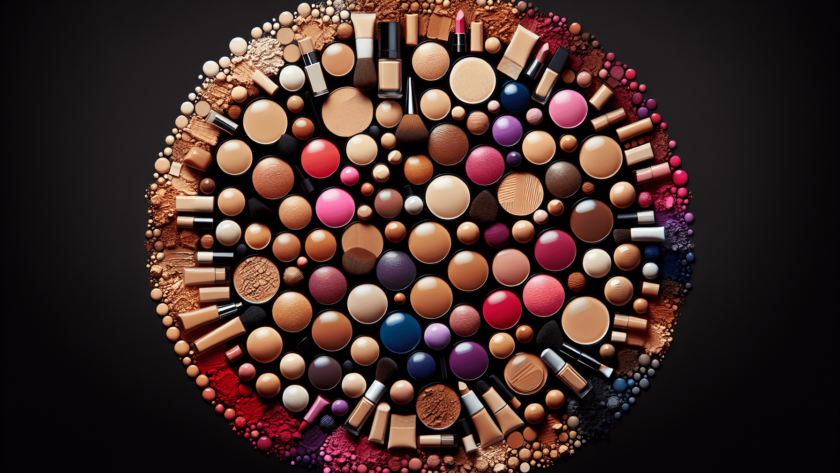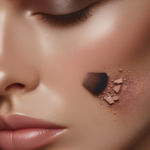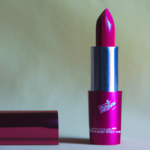Have you ever wondered if it’s possible to mix foundations? Well, the answer is a resounding yes! Mixing foundations can be a game-changer when it comes to achieving the perfect shade and texture for your unique skin. Whether you’re looking to customize your makeup routine or just trying to make the most out of your existing products, blending different foundations together opens up a whole new world of possibilities. In this article, we’ll explore the benefits of mixing foundations and share some tips on how to do it like a pro. So, grab your beauty blender and get ready to learn the art of foundation mixing!
What is mixing foundations?
Definition of mixing foundations
Mixing foundations refers to the practice of combining two or more different foundations to create a custom shade or to achieve specific desired effects on the skin. It involves blending different colors, finishes, and formulas together to create a unique foundation that suits your individual needs.
Why people mix foundations
People mix foundations for various reasons, including the following:
-
Customizable shade: By mixing foundations, you can create a shade that perfectly matches your skin tone, especially if you have difficulty finding the right shade in a single foundation.
-
Improved texture and coverage: Mixing foundations allows you to manipulate the texture and coverage of your base, enabling you to achieve a finish that suits your skin type and desired coverage level better.
-
Enhanced longevity: Some individuals find that mixing foundations helps their makeup last longer throughout the day, as they can combine formulas that provide different long-wearing properties.
-
Economical: By mixing foundations, you can make the most out of the products you already own, saving you money in the long run.
Benefits of mixing foundations
Customizable shade
One of the significant benefits of mixing foundations is the ability to create a custom shade that matches your specific skin tone. Foundation shades available on the market often come in a limited range, leaving many individuals struggling to find a perfect match. By mixing foundations, you can blend various shades to create a personalized color that seamlessly blends with your complexion.
Improved texture and coverage
Mixing foundations allows you to experiment with different textures and coverage levels to achieve your desired result. You can mix a matte foundation with a dewy one to create a natural satin finish or combine a light coverage foundation with a full coverage foundation to customize the level of coverage you prefer. This versatility gives you the opportunity to tailor your foundation to your specific skin needs and preferences.
Enhanced longevity
Some foundations may have excellent staying power on their own, while others may not provide the same level of longevity. By mixing foundations, you can combine different formulas to create a base that lasts longer on the skin. For example, if you have an oilier complexion, you can mix a mattifying foundation with a long-wearing formula to ensure your makeup stays put throughout the day.
Economical
Mixing foundations not only allows you to create a personalized shade but also helps you make the most out of the foundations you already own. Instead of purchasing multiple foundations to match your skin tone throughout the year or for different occasions, you can mix and match to create the perfect shade tailored to your needs, saving you money in the long run.
Concerns about mixing foundations
Color matching challenges
Although mixing foundations can address the challenge of finding the perfect shade, it also presents new color matching challenges. Achieving the right blend can be a trial-and-error process, especially for those who are new to mixing foundations. Finding the right balance between different shades can be tricky, but with practice and experimentation, you can master the art of color mixing.
Texture inconsistencies
Mixing foundations with different textures can result in inconsistent application and finish. Combining a matte and a dewy foundation, for example, may create a blend that appears patchy or uneven on the skin. It’s essential to consider the compatibility of textures to avoid any unpleasant surprises when applying the mixed foundation.
Product stability
Mixing foundations may affect the overall stability of the products. Foundations are carefully formulated to provide specific textures, coverage, and longevity. When mixed together, these properties may be altered, potentially compromising the performance of the foundations. It is crucial to be aware of any changes in the overall consistency or performance of the mixed foundation and adjust accordingly.
Possible adverse reactions
There is a possibility of experiencing adverse skin reactions when mixing foundations, especially if you have sensitive or reactive skin. Introducing new ingredients by combining different foundations increases the risk of skin irritation or breakouts. It’s important to patch test any mixed foundation on a small area of skin before applying it to the entire face to minimize the chances of an adverse reaction.
How to mix foundations properly
Choosing compatible formulas
To mix foundations properly, it’s crucial to choose compatible formulas. Foundations with similar bases and ingredients are more likely to blend well together. For example, mixing a water-based foundation with another water-based foundation or a silicone-based foundation with another silicone-based foundation is generally easier to achieve a smooth and cohesive blend.
Determining the right ratios
Finding the right ratios when mixing foundations is key to achieving the desired result. Start with equal parts of each foundation and gradually adjust the ratios until you reach your ideal shade or finish. Keep track of the amounts and ratios used to recreate the blend in the future if desired.
Mixing techniques
There are various techniques you can use to mix foundations effectively. One method involves pouring both foundations on a palette or mixing dish and using a foundation brush or sponge to blend them together until fully combined. Another approach is to mix the foundations on the back of your hand before applying them to your face. Experiment with different techniques and find the one that works best for you.
Testing before application
Before applying the mixed foundation to your entire face, it’s crucial to test it on a small area of skin. Apply the blend to your jawline or the back of your hand and blend it out to ensure it matches your skin tone seamlessly and doesn’t cause any adverse reactions. Testing beforehand allows you to make any necessary adjustments before committing to wearing the mixed foundation all day.
Mixing foundations for different purposes
Creating the perfect shade
One of the primary reasons for mixing foundations is to create the perfect shade that matches your skin tone. Whether you have a hard-to-match complexion or find that your skin tone changes throughout the year, mixing foundations allows you to experiment with different shades and undertones to achieve a seamless, natural-looking match that enhances your overall complexion.
Highlighting and contouring
Mixing foundations can also be useful for highlighting and contouring purposes. By combining foundations that are a shade or two lighter or darker than your skin tone, you can create custom highlight and contour shades. This technique allows for a more precise and tailored application, resulting in a sculpted and dimensional look.
Adjusting coverage and finish
Another advantage of mixing foundations is the ability to adjust the coverage and finish of your base. If you have a foundation with a coverage that is too heavy for your liking, you can mix it with a lighter coverage formula to create a more natural-looking finish. Alternatively, you can mix a matte foundation with a dewy foundation to achieve a satin or luminous finish that suits your preferences.
Adapting to seasonal changes
As the seasons change, so does our skin tone. Mixing foundations allows for easy adaptation to these changes without the need to purchase new foundations each time. By adjusting the ratios and undertones, you can create a foundation that matches your skin tone, whether it’s in the winter when your complexion tends to be lighter or in the summer when it tends to be deeper.
Compatible foundation combinations
Mixing within the same brand
Mixing foundations from the same brand often yields the best results. Brands tend to formulate their foundations with similar bases and undertones, making them more likely to blend seamlessly together. This compatibility ensures that the finished blend matches the brand’s overall range, allowing for a more cohesive and natural look.
Mixing within the same formulation (e.g., liquid with liquid)
Mixing foundations with the same formulation, such as liquid with liquid or powder with powder, provides a smoother blending process. When the formulas have similar consistencies and ingredients, they are more likely to mix together seamlessly, resulting in a cohesive blend that is easier to apply and provides a uniform finish.
Mixing different formulations (e.g., liquid with cream)
While it is possible to mix different formulations, such as a liquid foundation with a cream foundation, it requires more careful consideration. Different formulations may have different textures, coverage levels, and ingredients, which can affect the overall performance and application of the mixed foundation. It’s important to experiment and test the blend before applying it to ensure the desired result.
Combining different coverage levels
Combining foundations with different coverage levels allows for customization and flexibility. You can mix a full coverage foundation with a lighter coverage foundation to create a medium coverage blend that suits your preferences. This combination gives you the ability to adjust the coverage based on your needs and the occasion, providing versatility in your makeup routine.
Tools and accessories for mixing foundations
Palette or mixing dish
Using a palette or mixing dish provides a controlled surface for blending foundations. It allows you to easily mix and adjust ratios until you achieve the desired shade or finish. Palette options range from glass to plastic, and some may even have multiple wells or compartments for mixing and storing different shades.
Dedicated foundation brush or sponge
A dedicated foundation brush or sponge is essential for blending and applying the mixed foundation onto the skin. These tools help ensure a uniform application and provide a seamless finish. Choose a brush or sponge that you find comfortable and efficient to work with.
Clean spatula or disposable applicators
To maintain hygiene and avoid cross-contamination, it is advisable to use a clean spatula or disposable applicators when mixing foundations. This prevents bacteria from transferring between products and helps maintain the integrity of the foundations being mixed.
Empty containers for storing custom blends
If you frequently mix foundations, it can be helpful to have empty containers on hand for storing your custom blends. This allows you to create a personalized foundation collection tailored to your specific needs and preferences.
Common mistakes to avoid when mixing foundations
Mixing too many shades at once
When experimenting with mixing foundations, it’s easy to get carried away and mix too many shades at once. This can lead to confusion and make it challenging to recreate the blend in the future. Start with mixing two or three shades at a time, and once you are more comfortable, you can gradually expand your color range.
Not testing the blended shade on the skin
Skipping the step of testing the blended shade on the skin can result in an unfavorable outcome. The color may appear different than expected, or the blend may not suit your undertones. Always take the time to apply a small amount of the mixed foundation on your skin and blend it out to ensure a seamless match.
Using incompatible formulas
Using incompatible formulas can lead to a mixture that is difficult to work with or does not perform as desired. Mixing foundations with different bases, such as water-based and oil-based formulas, may result in separation or patchiness. Always ensure that the foundations you are combining have compatible ingredients and textures to achieve a cohesive blend.
Overlooking expiry dates
Foundations have expiry dates for a reason, and using expired products can lead to skin irritation or breakouts. When mixing foundations, it’s essential to check the expiry dates of each foundation being used and only mix together those that are still within their recommended usage period. Using expired foundations can compromise the integrity of the blend and negatively impact its performance.
Tips for achieving the desired result
Start with small amounts and adjust gradually
When mixing foundations, it’s advisable to start with small amounts of each foundation and gradually adjust the ratios until you achieve your desired result. This approach allows for better control over the color and texture and minimizes waste.
Take notes of the ratios and formulas used
Taking notes of the ratios and formulas used when mixing foundations can be helpful for future reference. If you create a blend that you love, noting down the amounts and types of foundations used ensures that you can recreate it accurately whenever needed.
Blend well to avoid streakiness
Proper blending is essential to achieve a seamless and streak-free finish when applying the mixed foundation. Take your time to blend the foundation onto the skin using a foundation brush, sponge, or your fingertips. Pay attention to areas where the different shades meet to ensure a smooth transition.
Always moisturize before foundation application
Moisturizing your skin before applying foundation is crucial to create a smooth canvas. Regardless of whether you are using a single foundation or a mixed blend, hydrating your skin adequately helps the foundation blend more seamlessly and enhances its overall appearance.
Conclusion
You can mix foundations to create your desired shade and customize your makeup routine. The benefits of mixing foundations include a customizable shade, improved texture and coverage, enhanced longevity, and cost-effectiveness. However, it’s important to consider the concerns, such as color matching challenges, texture inconsistencies, product stability, and possible adverse reactions. By following proper techniques, such as choosing compatible formulas, determining the right ratios, and testing before application, you can successfully mix foundations. Experiment with different purposes, compatible combinations, tools, and accessories to achieve the desired result. Avoid common mistakes and follow tips like starting with small amounts, taking notes, blending well, and moisturizing before foundation application. With experimentation, careful testing, and attention to detail, you can create custom foundation blends that enhance your natural beauty and give you the confidence to rock your own unique look.




